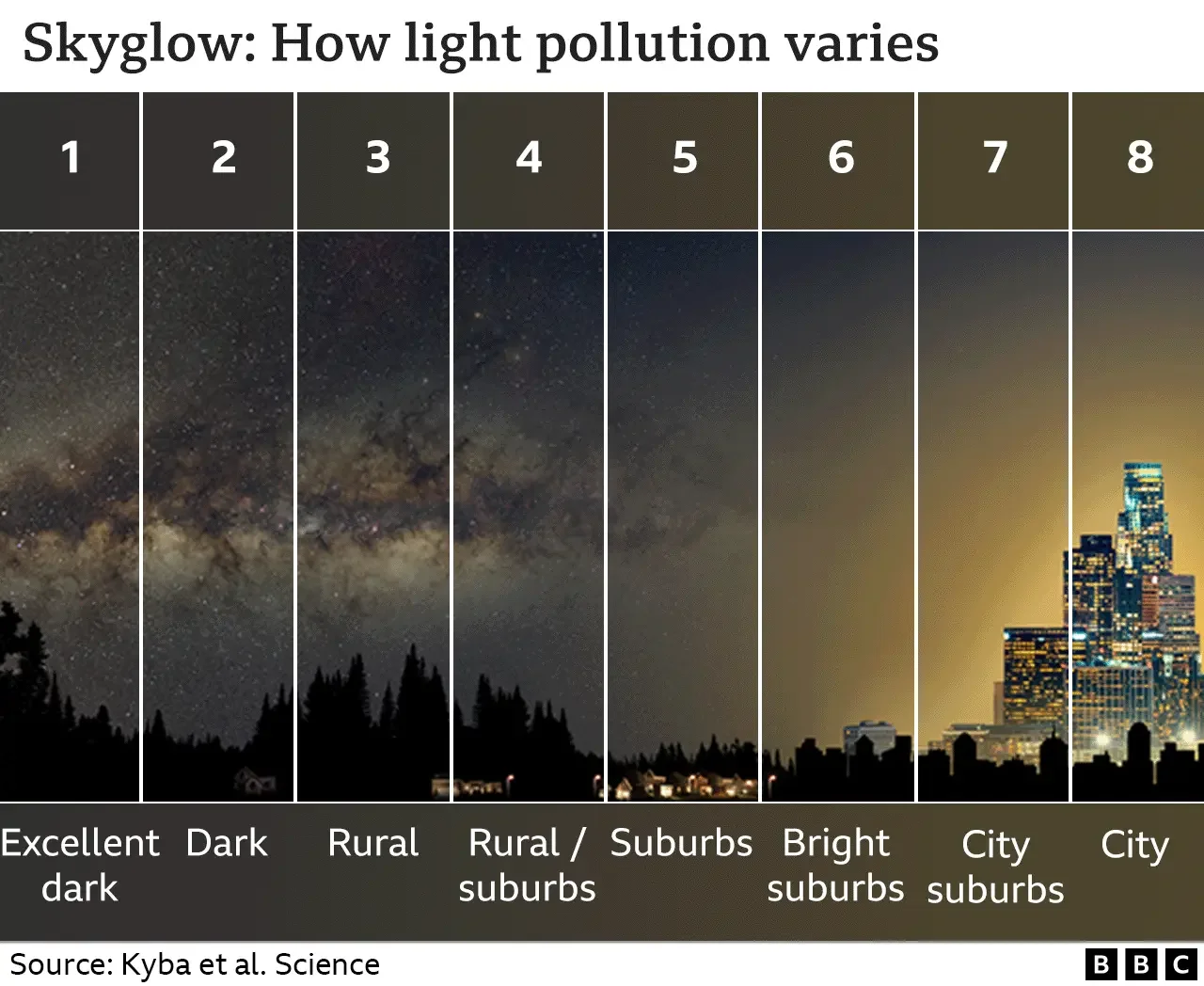The Wild Dark, Finding the Night Sky in the Age of Light
Book Review by Adam Kreuzer, Dark Sky International Delegate
Starting near the Sphere in Las Vegas, Craig Childs and his road buddy, Irwin, ride their bicycles from a Bortle 9 to a Bortle 1 night sky. As they leave from what Irwin labels an “attractive nuisance” they bicycle beyond the home of Dead and Company’s multi-week annual residency, 130 miles “as the crow flies” north to the Basin and Range National Monument to find what, until recently, was present everywhere on our planet, a Bortle 1 natural dark sky. During their 8-day journey: 1 day for each Bortle night sky, Childs, a storyteller, shares his stories about the night.
As Childs and Irwin struggled to find their way from Bortle 9, 8 and 7, I struggled through the initial chapters of his book. For me, the Age of Light, brings very little pleasure. Clearly, Childs found little pleasure in an environment polluted by disjointed, poorly planned urban sprawl. Childs’ early chapters account for how light sprawl has affected the circadian health of Vegas’ residents and the general well-being of Nevada’s native species. He questions why we don’t plan where and when artificial light is used and why we use bright, white, unshielded light in lieu of “warmer”, less bright and fully shielded light.
Although Childs’ ride remained physically difficult through 6, 5 and 4, his passion for a dark night guides his storytelling well. He drives us beyond the disturbing truths of how artificial light affects birds and insects to brighter tales about how dogsledders in Alaska still view the stars to navigate to their destinations. He shares how the night sky changes from nights where Orion is barely visible in a “dishwater” sky to nights when constellations are difficult to locate amongst the thousands of stars that blanket the sky. He guides us from a “domesticated” sky to a “wild” sky.
Riding into 3, 2 and 1, Childs tells the story: “Coyote Scatters the Stars.” Childs tells how a Navajo deity known as “Black God” took the stars from a buckskin pouch and placed them in the heavens. He tells how a “Trickster Coyote” steals the pouch. As the Black God chases the Coyote, “Coyote reached into the pouch and threw the stars up so hard they stuck and stayed wherever they landed, threw them until all the stars were spent. Coyote then dug deeper into the pouch and pulled out powder gathered at the bottom. He hurled that powder with all his might and formed the Milky Way.” Childs concludes the story with his observation in the Four Corners region of a petroglyph that appears to recount Coyote creating the heavens. As a result, Childs muses that he has come to believe the Coyote tale.
As Childs and Irwin reached Bortle 1, their bikes glide into their darkest night. Childs spreads his arms wide, letting his bike ride itself, cool air flowing past his face. Irwin rides past him laughing. Childs shares his love for the night. At the Bortle Hole, Childs’ light meter finally reads 22.17: Bortle 1. Childs ends his adventure with stories of optimism. Stories about how some people have become more responsible with their outdoor lighting. A rancher who now shields his barn pole light. A neighbor who now uses a motion sensor to guard against a chance encounter with a mountain lion. As did Childs, I enjoyed the end of his trip better than the beginning.
Adam Kreuzer, Dark Sky International Delegate


